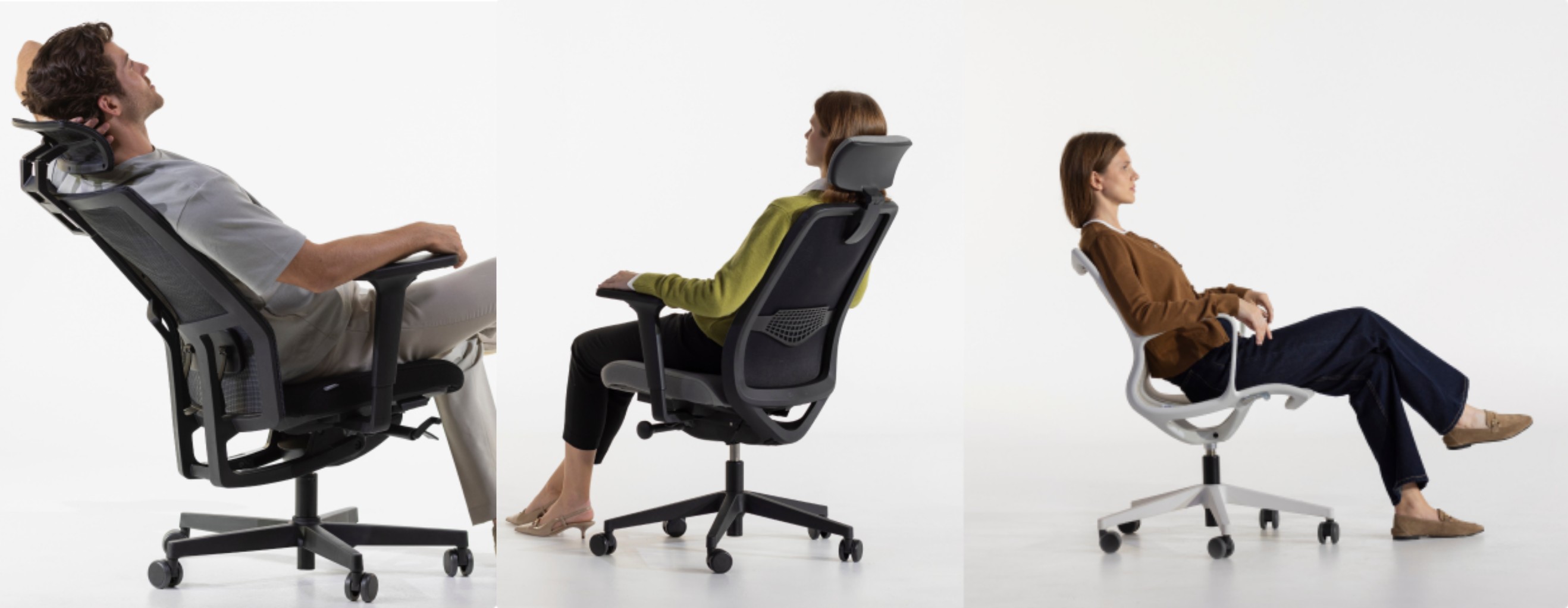Office chairs, essential for home offices and other workspaces, should be purchased by considering various factors. The size and nature of the workspace, the ability to customize the chair to meet different needs, the material quality, mobility, and practical mechanisms are among the key factors. Below, you can find a detailed answer to the question what to consider when buying an office chair.
Workspace
When asked what should an office chair be like, the first thing that comes to mind is the characteristics of the workspace, which tops our list. The features of the workspace are highly important when choosing an office chair. The size, layout, and ergonomic needs of the area where the chair will be used are key factors in making the right choice. For example, if it is to be used in a small office space, a more compact, lightweight, and functional design should be chosen. Additionally, the lighting, temperature, and general atmosphere of the workspace can influence the chair selection. If you spend long hours in the office, features like lumbar support and seating comfort should be considered to improve work efficiency. Furthermore, it is essential to match the chair with other furniture in the workspace. The chair’s height should align with the desk’s height to provide a more comfortable working position. In open office spaces, chairs with wheels that support noise reduction may be chosen to minimize distractions and maintain silence. Ultimately, selecting a chair that fits the workspace’s requirements enhances both comfort and productivity.
Customizability
Customizability is one of the most important features of an office chair. Since every individual’s body structure, seating habits, and comfort expectations vary, adjustable features should be considered when choosing a chair. Height adjustment, backrest angle, armrest height, and depth adjustments should all be personalized to the user’s needs. Additionally, some chairs come with special lumbar supports and reclining mechanisms, which help correct posture and prevent discomfort during extended sitting periods. Customizability offers a more comfortable working environment, both physically and mentally, thereby increasing productivity. In short, when a user finds a chair that fits their specific needs, they can work more efficiently.
Material Quality
The answer to what to consider when buying an office chair includes the importance of the materials used in the product. The material quality of an office chair plays a significant role in both durability and comfort. High-quality materials extend the chair’s lifespan and provide long-term seating comfort to the user. For instance, breathable fabrics or leather prevent sweating during use, offering a more pleasant experience. Additionally, the types of metal and plastic used in the chair’s structure affect durability and stability. The material quality also influences the aesthetic appeal of the chair. The materials chosen for a sleek look should complement the office decor. Users can create a more attractive working environment by selecting chairs that are both comfortable and aesthetically pleasing. In conclusion, material quality is one of the essential factors to consider when choosing a chair.
Mobility
Mobility is a factor that enhances the ease of use and flexibility of an office chair. A chair’s ability to move is necessary for rearranging the office or working in different areas. Swivel wheels and movable structures allow users to move freely within the office. Especially in large office spaces, mobility is crucial for users to quickly transition between different areas. Mobility also offers an ergonomic experience, enabling users to easily change their working position. For employees who have to sit for long periods, sliding into different positions on the chair increases comfort and helps maintain back health. Therefore, the mobility features of a well-designed office chair allow users to perform their daily tasks more efficiently.
Practical Mechanism
The last answer to what should an office chair be like involves the ease of use of its mechanism. Practical mechanisms play an important role in adjustability and ease of use. The ability of users to quickly make adjustments helps them achieve a comfortable sitting position without disrupting their workflow. For example, mechanisms that allow users to easily change the backrest angle or height adjustment significantly improve the user experience. Furthermore, practical mechanisms should also ensure the safety of the adjustments made. Users should feel confident that their adjustments are secure and that they won’t experience any slippage or instability while seated. These types of mechanisms offer users the ability to make easy adjustments, allowing them to sit in the most optimal position, which is a significant advantage in both professional and personal use.
Additionally, you can also read our article on Office Chair Recommendations for more detailed information on the topic.
